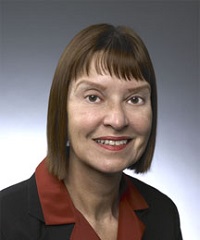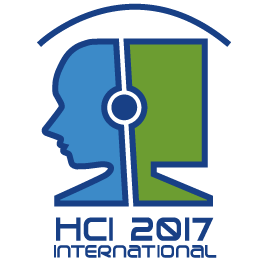Vancouver, Canada, 9 - 14 July 2017
Vancouver Convention Centre
Tuesday, 11 July 2017, 08:30 – 12:30
Anna Wichansky Ph.D CPE (short bio)
Oracle, United States
Objectives:
The purpose of this workshop is to provide hands-on experience conducting a live simulated usability test. It covers all the basic testing methods and artifacts that are essential for a valid and reliable test, including preparation of the product and lab, moderator and participant scripts, data collection tools and templates, and effective reporting formats. Current relevant ISO standards are referenced. A consumer-level website will be used in the exercises. Participants will get hands-on experience with a web-based software testing tool. It is recommended that this course be taken after the related workshop, How to Conduct Software Testing with Users, which is also offered at HCI International 2017.
Content & Benefits:
- Introduction: objectives, key takeaways, instructor’s bio, agenda
- The Product Scenario and Assumptions
- Test set-up:
- Product readiness
- Test environment
- Materials
- Moderator introduction:
- Script
- Test objectives
- Informed consent
- Group exercise: Instructor-led review of sample moderator script
- Starting the test:
- target groups
- Arrival
- Participant script
- Timing control
- Equipment state
- Running the participant:
- Readiness to start and stop tasks
- Undivided attention
- Frustration
- Partial completion
- Assists
- Controls: importance of consistency within and between participants
- Ending the test:
- Participant debriefing
- Payment of incentives
- Departure
- Data collection and recording methods:
- Manual methods
- Video and audio recording
- On-line screen and click recording
- Automatic performance data collection
- Surveys
- Demo of web-based software testing tool
- Role Play Exercise: Instructor coaches small groups of students playing common testing roles, using a released website, prepared materials, and online testing tool
- Analyzing usability test data:
- a. Comparison to goals
- Benchmarks
- "Before" data
- Use of quotes
- Effective reporting strategies for usability test results:
- ISO standards
- For developers
- For stakeholders
- For customers
- Online tool-generated reports
- Advanced Topics for effective usability testing:
- Ethical considerations
- Managing stakeholder expectations and perceptions
- Correcting design problems
- Special considerations for mobile apps
- Special considerations for medical apps
- Public domain usability testing resources
- Questions & Answers
Benefits: This course provides effective strategies and standards for conducting usability tests, including test set-up, moderator scripts and skills, participant recruitment and management, data collection methods and tools, and advanced topics relevant to industrial work on modern software. The hands-on exercises give a "feel" for what it is like to conduct a real test. A test report template is provided. The instructor brings a wealth of industrial research experience to coach you through the process and answer your questions about specific challenges of real-world usability testing.
Target Audience:
Intermediate-level UX research professionals, and experienced software designers, product managers, and consultants will benefit most. This course assumes students are familiar with software product development cycles, usability test planning, behavioral data collection methods, and are ready to apply this knowledge in a group lab simulation experience. Students should bring an Internet-ready laptop to the class.
Relevant links:
Bio Sketch of Presenter:

Anna Wichansky Ph.D CPE is an applied experimental psychologist who specializes in the study of how users interact with new technology. She has an M.S. and Ph.D in human factors from Tufts University, Medford, Massachusetts, USA and A.B. from Harvard University, Cambridge, Massachusetts, USA in psychology. She has researched, developed, and tested user interfaces for transportation, telecommunications, space exploration, electronic instrumentation, computer hardware, software, graphics, and media products. She has a patent for a remote control for interactive television. She worked at the U.S. Department of Transportation Research and Special Programs Administration, Bell Laboratories, Hewlett-Packard, and Silicon Graphics, where she founded the Customer Research and Usability group. At Oracle, she founded and directed the Corporate Usability Labs and the Advanced User Interface Research group. She is currently Senior Director of Applications User Experience. Anna is a Fellow of the Human Factors and Ergonomics Society and director emerita of the Board of Certification of Professional Ergonomists. She is on the editorial board of the international scientific journal Ergonomics. She is a frequent presenter at HCII, ACM SIGCHI, and HFES annual meetings.


